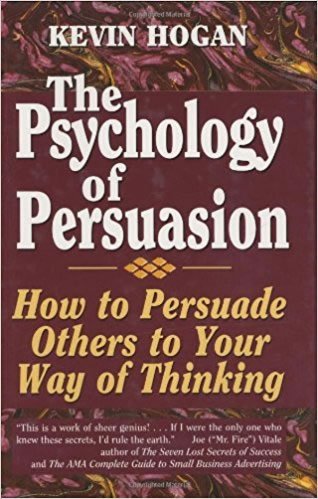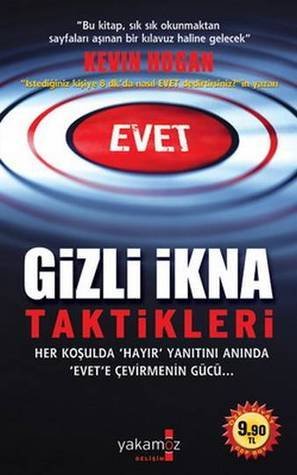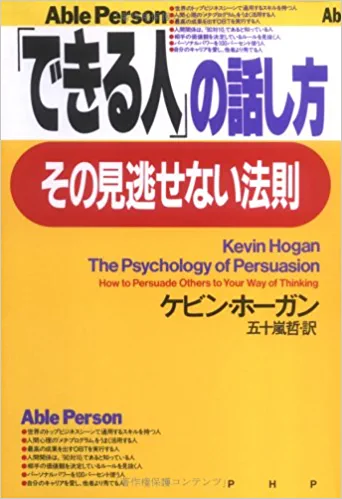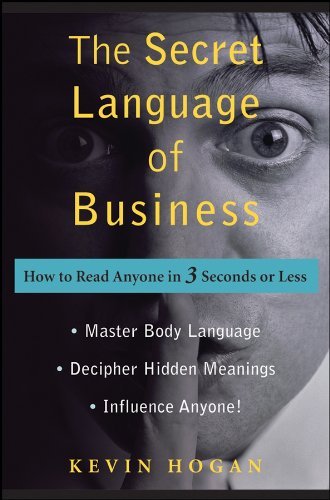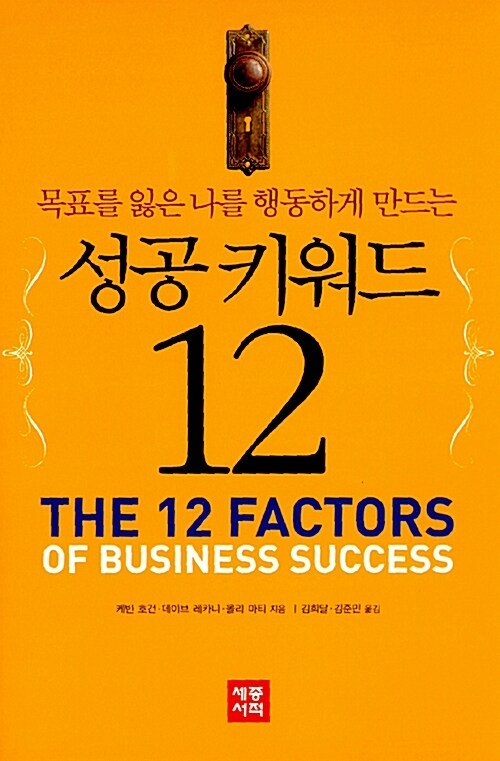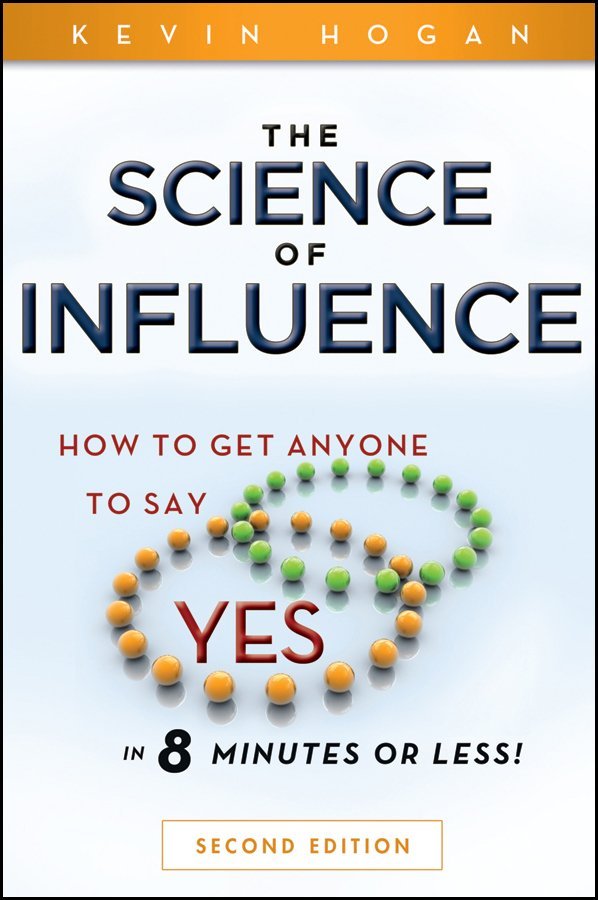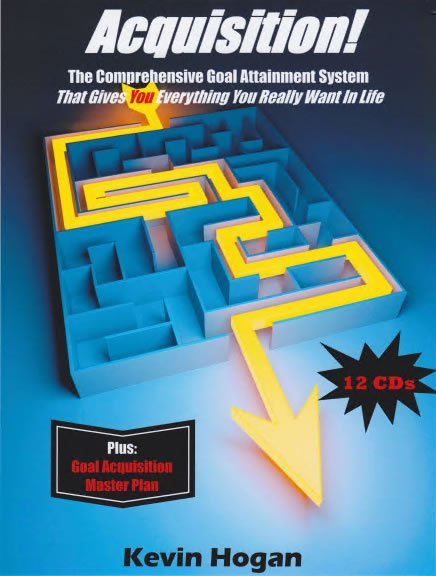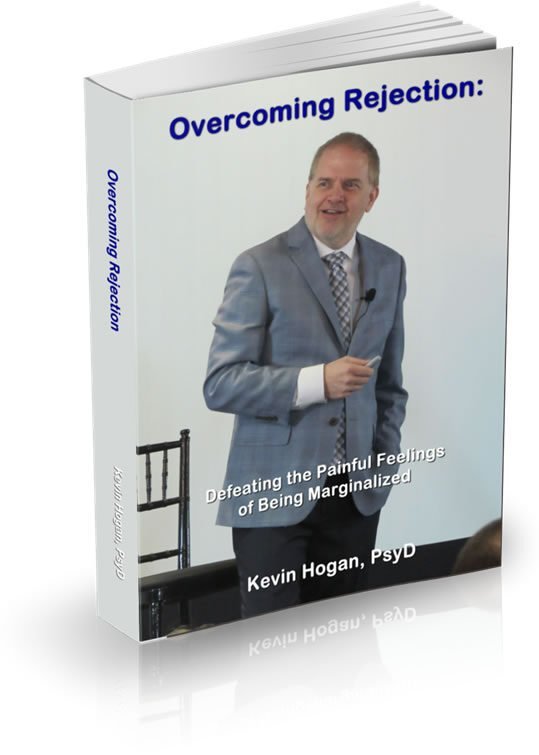Create and Use Thinking Frames To (Almost Always) Know What To Do
Look at the photo here. Notice that the video feed on the panels for the audience is not the same as the guy live on stage. There is about a 1/2 second delay here. Imagine how looking at one or the other might have changed your experience if you were in the audience. One frame is bigger than life, artistic, a soft lens. vs. The real person (for better or worse).
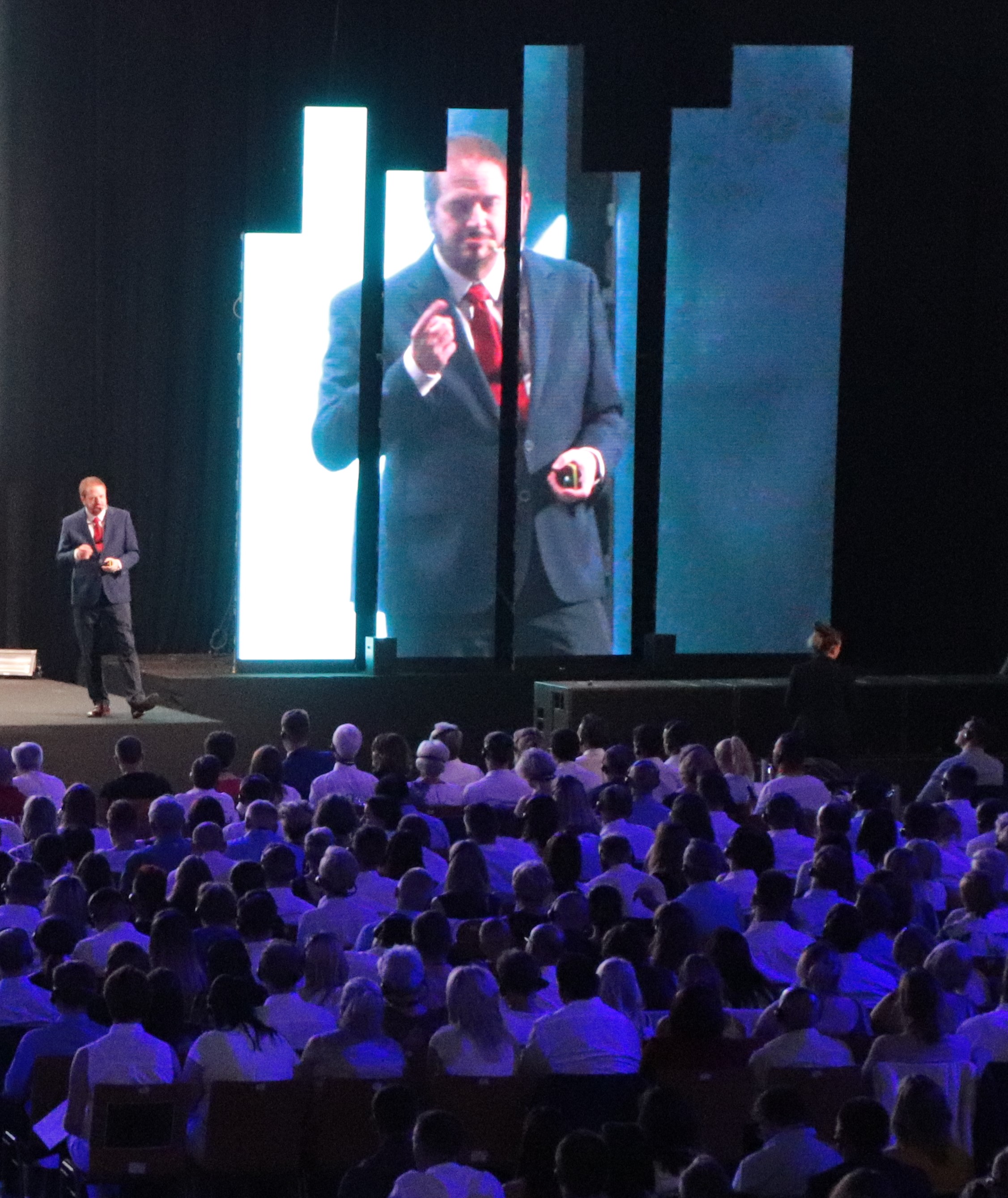
Today, you find out how to create frames for the purpose of making the RIGHT decision.
I’ve been watching the old TV show FRIENDS as background noise while working out this week.
Chandler and Monica are in a relationship at this stage. They get into a random nasty argument. Chandler goes ballistic, and assumes the relationship is over, forever. Monica of course is wiser (experienced) and says, “honey if couples broke up every time they argued, no one would ever be in a relationship for more than a week.”
Pretty solid wisdom from a 20 year old popular sitcom… the difference of one person (Monica) who has been in relationships where people communicate a great deal vs. the person (Chandler) who has not had that level of experience.
Two people looked at the same situation from completely different points of view. (Different frames)
Several days had passed since the blow up and they both had come to completely different conclusions about what would happen and what they will do next. They were both in the same room freaking out about the same thing but they had two different frames. Monica saw the real person in a normal experience, essentially not concerned. Chandler saw someone who was pushing his threat and fear buttons that in his mind signaled doom.
That’s framing, and of course that’s how your PAST EXPERIENCE is filtered into your current reality through your frames and those of others.
2 weeks ago I finished updating every video in the 10 week Digital Marketing Course. (10 weeks as it is a coaching course. I’m there with everyone, each and every day. The Internet Marketing Course is perhaps one of the best 4 courses I’ve ever developed. Why? Because it shows you how to get the RIGHT answer almost every question that will come up in your online business, and particularly all things marketing and sales. Do what is in the internet marketing course and you never regret your decisions.
Why?
Early on in a business or a reinvention period you have lots of fights and arguments with your business. The website goes off line too much. The 5000 words you typed this week revealed 7 spelling errors which people complained about. The video you made added 10 pounds to your image. You didn’t have the only form of payment acceptance a potential client wanted to use and you lost the client forever. You ended up vitrolic as you sat on hold with the bank fighting a bogus charge back.
This is all part of real and EXPECTED growth in business and a relationship. The FRAME you put on the experience (painful growth vs. hopelessness) allows you to keep building.
Today I want to share with you some updated material from another course I created that has blown participants away. This one is called Decision Point. People who make solid decisions that are thought out after the blow up, with the correct criteria and understanding the ramifications of their choices once acted upon, tend to make excellent decisions.
Do these things and you won’t regret your choices any more. Framing your experience, your choices and decisions is critical to your future. Excellent frames create excellent decisions. Tiny frames generally trigger poor decisions that will hurt you in the longer term.
The Right Decision – Fast Frame FAQ
1. What IS a frame anyway?
When you look out the window first thing in the morning, you have one view, the bedroom window view. This is the view from the apartment at Lake Como in Italy a couple years ago.
Your frame causes you to filter out almost EVERYT HING…
HING…
out of your THINKING process…except what you are looking at and looking for.
In other words, if you are telling someone your wife is great, you use your “great wife frame.” You look out and see all the cool stuff she does for you. You talk about those things and both you and your friends are positive you have a great wife. They learn to like her quickly and they barely know here.
If you are telling someone (or just thinking to yourself) your wife is not so great, you use your “doesn’t meet my standards frame,” you look for and look at all the terrible stuff your wife does.
Because good things are rarely picked up by a brain that operates on fear and pain avoidance, it’s pretty easy to pick out 5 things that are bad about your wife. Ding, ding, ding, ding, ding. And they are left wondering, “what did you see in her in the first place.”
And THEIR BELIEF is based on the frame they are USING RIGHT NOW to communicate with their friends (or their rolodex in their brain).
What you look for, you find?
It’s not quite that simple, but that is far more accurate than you might ever guess.
If I suggested that I looked out terrace window in the morning at the Italian Alps and felt calm and filled with good fortune, you’d understand it, especially after seeing this frame. You would understand it and believe it.
2. Frames are more often than not, put in front of you, and not by your choice. When you look through a frame, you almost can’t see the frame unless it is pointed out to you.
Key Point? People rarely understand that what they are thinking and feeling through tiny frames (Did you notice the solar panels on the home on the right? Of course not. But that’s the one thing that a few people will set their attention on.) doesn’t represent reality. They assume it’s real because they FEEL what the FRAME is GENERATING. But that is only one window. There are DOZENS of frames (big underestimation here) that will give you all kinds of different views of this person!
You think of people you know in very specific frames. Changing the frame, changes your feelings about the person, place or thing. Did you focus on the satellite dish on the home in front of the frame? Probably not, but once it’s pointed out, attention is now given to a few pixels in a seriously big picture. I never saw these two things until I got home and looked at the photos…and we spent a few hours out on that terrace. Attention was placed on the bigger picture and little irritations were not turned into big challenges. Big frames allow for more information to make decisions with.
3. Without carefully thinking about the frame you are looking through, your frames seem to represent reality and seem complete… The Random Feeling Frame thus generates almost all decisions. The Random Frame is almost always based on the emotions/feelings felt in THIS specific moment.
Note: The same feelings will come up again in the Justification Frame where you have to justify a decision that was based on the Random Feeling Frame. If I would have looked out the window and saw some shabby building next door, every single day in Italy two years ago would have been less appealing. Frames determine where attention goes to and once your attention is there the default feeling is generally negative in nature.
Now consider a frame that is intentionally NARROW. Narrow frames bring all the attention to one very specific thought, feeling or experience. In this case the ascending stairs and activity you wouldn’t have thought “normal” on a “stairway.”

4. Before making decisions, always step back and look at YOUR frame. Ask your Self, “How is my brain viewing this person or experience?” Ask yourself, “am I trying to have a complete picture or look at 3 pixels in the upper right hand corner?”
This will help you shift your thinking to a frame that is the right size. Imagine deciding if you should go to Bellagio, Italy based on the stairway alone. It’s not going to be a GOOD decision (even though it might turn out great). The better decision making frame is the image with context. How is your morning impacted by The Alps, Lake Como, a beautiful blue sky? Broader context helps you make a BETTER decision.
People who think in narrow frames like the staircase, as cool as IT is, are in for a load of problems in life. Always think about your big decisions in FOUR BIG DIMENSIONS (include time, moving forward in life/business/decision as your 4th).
In the photograph of the stair case, what’s behind me?
Exactly… it doesn’t matter, because I’m going UP the stairs.
5. With rare exception, don’t weigh feelings of the moment. If you use emotions and feelings of the moment (even of the week or month) as a yardstick (criteria), you have no ability to make a good or right decision. People have no idea why they are feeling what they are feeling RIGHT NOW. Feelings become part of a frame but your job is to follow the rule in #4 above. Do you want that feeling in that moment to impact your decision? Probably not. If you do, you can’t succeed in business, you can’t have children, a wife or deal with big problems when they happen in any aspect of life. People who weigh momentary feelings live in fear of the future, worried they won’t even be able to pay the bills.
6. When looking at your FRAME FIRST, what issue/problem/difficulty does your frame currently address most? (What is the key criteria in THIS specific frame?)
If that frame disappeared, what issues (criteria) would be important in your new frame that YOU pick? Always list at least FIVE things you want in your frame to consider or address, so you can move yourself from a Temporary Feeling Frame to a Clear Thinking Frame.
7. When you find yourself in the Clear Thinking Frame, ask your Self, “What else is currently being obscured in the picture?” (Not seen or evaluated….) List at least FIVE things you are NOT looking at. Begin with opposition. (She’s an idiot? No. Switch to she’s the best.) Your world is now BIGGER.
8. Of the 10 things you listed, which five are the most important to a Clear Thinking Frame? Examples: a) How does your decision impact your day to day business/life a year from now, three years from now? b) How does my decision change my income? c) How does my decision change how I invest my time next year and then in 5 years? d) Can I get what I want in business/life three years from now if I move forward and climb those stairs? e) What is the best way to plan instead of react to stimulus of the moment.
Bigger frames almost always make better decisions. Prove it to yourself: Cover up the top half of the picture. Is that a summer destination for you? Remove your hand from the top half of the picture. (Swiss Alps, Lugano, Switzerland.)

9. When conflict or bad feelings happen in a relationship/business/office, the failure to recognize the other person’s frames and yardsticks and comparing those frames and yardsticks to your own is the key cause of conflict in relationships.
This one is easy: You know people judge the value of something based on what they are looking at in contrast to what they expect and then consider the value of that expectation. People not used to thinking or considering, will make decisions upon those expectations. That causes much internal conflict. That causes much external conflict. Helping someone look at their frames after the emotions of the moment are passed/past is the best time to do this.
10. Good decisions can’t be jointly made if people have frames and measurements that are very different from each other. It shows that two people aren’t thinking and bad decisions will be made. Encourage yourself to have a bigger frame. Then encourage the other person to have a bigger frame and explain how to make that happen.
11. YOU should ALWAYS assume YOUR FRAME is an impoverished frame (it sucks) AND that you NEED NEW criteria quickly to build a new frame. You can always take your Ultimatum Frame back and make instant bad decisions or you can take a few minutes and make the right decision.
12. Finally, having a friend with no bias or prejudice in the situation look at your frame SOMETIMES offers a good balance before you examine the decision itself.
How do you CREATE Thinking FRAMES for the Best Decisions
There are two ways you can build frames. You can build them from the decision down (really bad); or what you need or want up (really good).
Building a frame from the decision down means that you feel (there’s that ugly word) compelled to make a decision because of something, and you have focused in on that “something.”
When people make decisions based on their feelings of the moment (or the week), they typically make poor decisions that will also have a lot of collateral damage. (Many other people are going to be negatively affected by the bad decision.)
But, people rarely think about ramifications or collateral damage in life or business, when beginning with a decision they must justify. They tend to only think about the “something.” (The something that causes a bad feeling.) They make their frame from the decision down.
This person will only accomplish brief moments of feeling good in moments because they discharge pain and fear by running from it and not carefully going up the stairs.
It’s always a mess. What should they be doing?
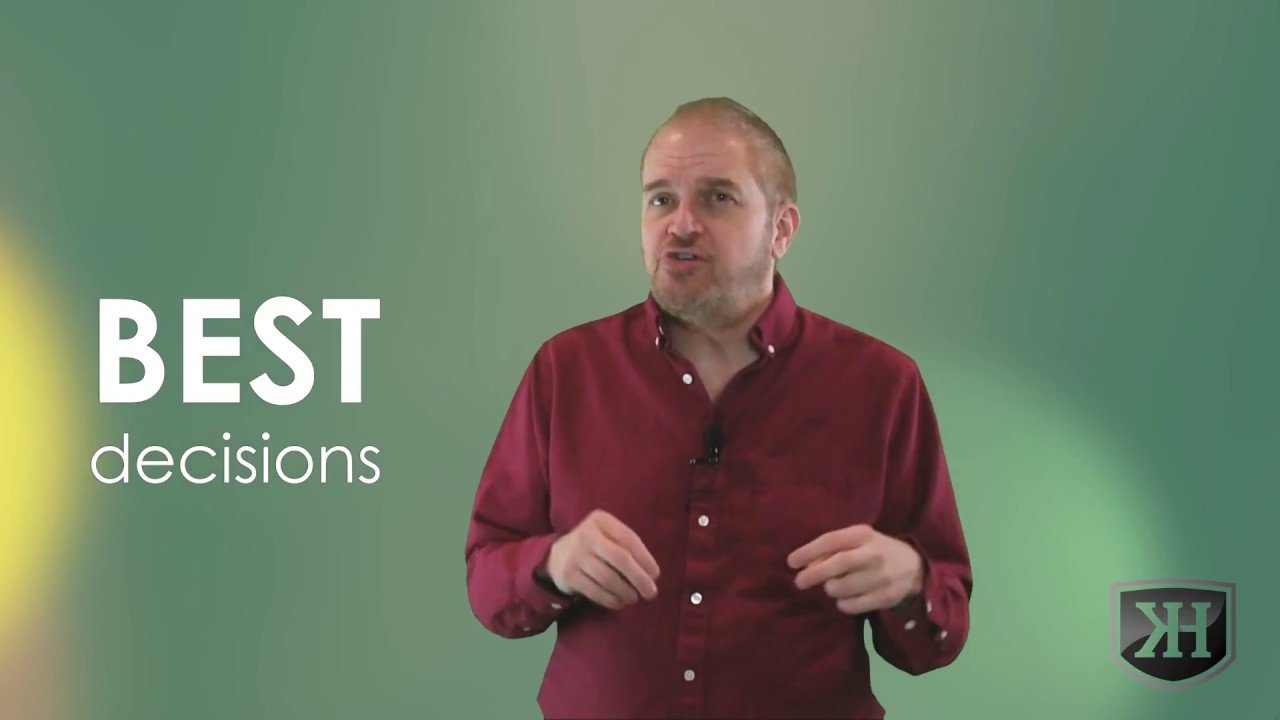
A bad decision can haunt you for the rest of your life. Clear Frames stop you from all of these regrets in the future
In order to *create a Clear Thinking Frame* that will give you a good decision, you have to build from what you want or need, UP.
Imagine a different relationship decision.
Your friend tells you the Friday night arguments with the wife must stop – or out the door she goes…and that is something you write down as he has asked for your assistance. But instead of a period, YOU put a question mark after the decision – as this lousy decision has been made prior to thought or creation of a Clear Thinking Frame.
Now he thinks you’re crazy.
“She’s been nasty and abusive lately and I want her to leave. Enough is enough.”
Just from reading that sentence, it SEEMS like it’s a good decision to have her leave!
But you smile.
Who knows? It might be the best decision. Perhaps… But, as you can see the decision is made from an “enough is enough” feeling.
What to do?
Step One: Identify the Hypothetical Decision to Be Made
“She is moving out,” is now at the top of the paper and the first criteria under the decision to be made or not is “Friday night arguments”.
(You can change this to “Should I ask her to leave?” for your friend.)
Step Two: Step Back…Way Back… from the Current Frame
Ending a business or life relationship is generally a decision not to be taken lightly.
Most people make these decisions when they are hot headed. That means, they have no idea if it is a good or bad decision.
Next, because you are helping your friend, you point out that life is a whole lot bigger than those arguments; though you agree they need to stop. You have your friend step back and help him build criteria for having the wife move out.
Step Three: Identify Important Criteria to Be Weighed in the decision.
Like any guy, you help him with things that matter most…”How’s your s*x life?”
“Huh, oh it’s great. Better than yours.”
You feel the desire to strangle your friend but withhold that til later and write down, “S*x life” underneath, “Saturday arguments.”
“That’s changing if you kick her out.”
“I’ll survive.”
You smile.
You aren’t so sure.
“Now, how important is her income to how you are living?”
“Huh, well she makes half the money.”
“And what does that MEAN when that half is gone?”
“Well, it’s not a disaster, I just live tighter.”
“Right, you keep the heat on, turn off the electricity, keep the water but stop garbage service, you eat one meal per day instead of three and…”
“I get the point.”
“Huge lifestyle changes due to income” gets written down beneath “s*x life.” It may not be quite as important, but it’s pretty important…especially when the trash starts piling up…”
“Now, you like your kids? I mean REALLY?”
“Yeah. They’re good. They make my day.”
“What are the odds that you will have the ability to see them whenever you want once you boot the wife?”
“Never thought of it.”
“Let’s say it’s 50/50 split of seeing the kids. Half the nights here, half the nights at the Motel Six. You live with that?”
“Well no, they’ll stay here all the time…”
“Oh…not in this country…50/50 dude.”
“Well that sucks….how they gonna get to school when they are at the motel?”
“Could your wife drive them?”
“Sorry, I’m not asking her for that 10 year commitment.”
“Then maybe you could drive them? I’m your best friend not a bus company. Come on! Think! Get your head out of the fridge…”
[Do you see his picture changing? Do you see how you are making his WORLD BIGGER? Have you got his focus off of one behavior/feeling? Good job!]
“Write down, arrange for transportation for kids to get to school. Next write down, “see kids half the time”; “kids’ lives screwed up,”; and “new job” for one of the two of you and probably two jobs for both of you to make up for lost income….that’s four more criteria…
Now some factors are waaaay more important than others. But when you’re just taking your first snap shot, you’re just looking to see if you have the key points, the criteria, the key factors noted.
It’s harder than you think when you do it yourself, but with no smart people around, you can help yourself. Yes, it’s a lot easier to help a friend!
Step Four: View All Criteria As If Each is Equally Weighted First
As you progress in decision making skills you will not use equally weighted criteria in decision making.
“So, let’s see we have…”:
…to say goodbye if it happens again:
- Saturday night arguments
- No sex life
- Income loss huge: lose basics of life
- See kids 1/2 time
- Their lives screwed up
- New job for one or both of you
- Additional job to make up for income loss
- Free/fun time disappears
“Now wait just a minute, there will be lots of good stuff when she is gone, too.”
“Like what.”
“No more arguments.”
“Yeah, we have that one written down…you remarry…you really believe your next one went to a different school of argumentation – and isn’t going to argue with you?”
“Can’t be as bad…nothing could be as bad.”
“There’s a first time for everything. OK, I’ve written it down.”
“There would be less stress around here.”
“Would that be when you pick your kids up from day care, drop them off at school, get a second job, cook four nights per week, have no sex… you really want me to write down less stress? REALLY?”
Your friend silences himself then asks you… How’s that picture looking???

“OK, whatever…I get the drift.”
Your friend’s world is getting BIGGER and a BETTER (maybe the same!) decision is about to be made.
“Ah good…this discussion was getting long. OK, let’s just stop here and look at what we have. We could do this all night, but I’m not getting paid…”
Step Five: Move Away from the Emotion While Viewing the Entire Picture
“So, what do I do?”
“First, I don’t know. But I do know that whenever you get so emotional about stuff like this… when you start thinking like, Oh, kick her out and turn your life, her life, your kids lives, your sleep, upside down and commit the biggest act of self masochism on the planet.”
“But, she is b*tchy and it’s driving me nuts.”
“OK, so what days do you want the kids and how are they going to get by when you are working that second job and you aren’t home?”
“Sounds like you’re siding with my wife.”
“I’m siding with you.”
“So what are you going to do?”
“I get the point, but what are we going to do about the arguments and fights?”
“Whoaaa….what happened to kick her out?”
“I said I get the point.”
“Well the way you do that is talk or therapy or whatever, it’s not my job to show you how what to do…it’s my job to see if you should kick her out…survey says?”
“No.”
Now, in our mythical example, which I’m sure you can’t relate to 😉 you had your friend step back from his frame which was very small. His original frame seemed HUGE…because there are emotions attached to it; but in comparison to all of the life changes and ramifications in this instance…it turns into a situation where a DIFFERENT decision really needs to take place. (I this case, perhaps therapy, counseling, recognition that this is normal, etc.)
By logically taking a BIG FRAME instead of a small frame, you build criteria for making the decision or not.
And that is how every PRE-DECISION FRAME has to be created. Criteria are established under the hypothetical decision to see if it even makes sense.
Your feelings don’t instantly change, but the decision making process often changes what your behavior might have been.
Building criteria for a life changing decision takes about 3 – 7 minutes. It’s less for most decisions because they are much easier and have much less emotional investment.
Next week, we’ll dig deeper. We’ll look at how to decide when the big picture is all there and the criteria aren’t so clear cut…what to do when the same number of negative criteria matches the positive criteria.
In other words…he just found out she’s been sifting money off the investments and socking it away elsewhere AND there is evidence of you know what….NOW how do you establish and weigh criteria?
I’ll show you the process next time.
Have Kevin Hogan as your own personal mentor!
Decision Point–Learning to Make the Right Decisions that Will Finally Lead You to Your Destiny
Apply for the Decision Point Game Changer
OR
Apply for the Decision Point Game Changer Installments Plan
- Next course date: November 15, 2022
If you’ve ever taken one of my e-courses, yes, it’s like them! This E-course lasts 7 weeks and has more than 20 modules. You set your own schedule – you don’t have to be “in class” at any particular time each day. You get VIP access to a secret portion of the web site, and can log in at any time.
You’ve been thinking of getting a divorce but your husband does bring in a decent income. There are other fish in the sea but you wonder if you can still compete. Can you do better? What about the kids? What do you DECIDE? How do you decide?
Moving is always tough but when there are more than one person’s job or one person going to a school that they love and the possibility of leaving friends behind makes for what many consider an impossible decision. What do YOU decide? How do you decide?
Your investments have done OK but your total income saved for your future is terrible. There are a lot of options you’ve been told about but you really don’t know what to do. What will you decide? How will you decide?
A relative lives with you. They take advantage of you but you can’t let them go because you don’t know what will happen to them. What is the right thing to do and will that thing be what you decide? How will you decide?
An elderly relative lives with you. They can’t take care of themselves any more. You hate the idea of a nursing home or “worse.” You also want “a life.” What will you decide to do?
You are a manager at your company and only have enough budget to pursue one product line. You can choose between an almost sure thing with a very modest return or a riskier proposal that could make you a superstar. What do you decide? How do you make the decision?
You’re on your way home for the holidays. You get stuck in bad weather and are put up at a local hotel. In the bar that night a beautiful woman strikes up a conversation with you and she has offered you the key to her room. What will you decide?
Your wife is two months pregnant. A test reveals the baby is going to be born with a disease that will require your 24/7 care for the rest of your life. She decides she wants to keep the baby. But you haven’t made your decision. What will you decide to do? How will you make the decision?
Your home has a horrible defect that you can cover easily in the selling process and the defect almost certainly won’t be discovered for years. Revealing it will reduce the price of your home $100,000. What will you decide to do? How will you decide?
You can stay at your present job which you really don’t like that much and live on a predictable but very modest income or you can pursue a venture that has about a 70% chance of success and if it succeeds, you would double your income. What do you decide to do? How do you decide?
You are involved in a custody battle for your children. One of the kids is misbehaving terribly and you don’t know whether you should spank them or discipline them firmly. The result could easily effect the results of the custody hearing. What do you do? How do you decide?
Two women have taken a liking to you. You date them both for some time. They both begin to talk about moving in and a permanent relationship. One is the kind of person you feel comfortable with and would be easy to love. The other is 10 years younger and is celebrity beautiful. Unfortunately she knows it and enjoys being the center of attention. What do you decide? How do you decide?
And those are just a few of the decisions that face real people every day. Decisions that people are forced into and have no idea what to do or how to do it.
THIS COURSE shows you how to make ALL of the decisions above.
And it’s important to note, that the right decision easily can be different from person to person. Knowing how to evaluate THAT is crucial to everything you will do…but no one ever does it….
If you haven’t taken an e-course with me: an E-course with me is not like an E-course as thought of by the rest of the world. With me an E-course means you will have instruction in several media forms. Video, audio and text. There is NO specific time you must meet with me every day.
About 50% of the people who take my courses collect all the materials and work at their own pace later. The other half work with me and sometimes with other participants when necessary, on projects that are necessary to learning how to make RIGHT DECISIONS.
My courses are universally known to be challenging, results-oriented, pragmatic and show you EXACTLY how to get where you want to go.
Decision making is a function of thinking that almost 90% of people do very poorly. Most people think that if something turns out well, they made a good decision. If something turns out poorly they made a bad decision.
And that conditioning is one of the biggest reasons why people are poor decision makers.
Decision making is first and foremost about MAKING DECISIONS IN THE FIRST PLACE.
Every day, people vacillate on making changes in their lives that they KNOW are absolutely necessary, but they decide to do nothing and hope for the best, only to live a life where nothing ever changes.
This is where we begin.
Elimination of PROCRASTINATION and VACILLATION.
You will learn how to recognize situations where you are about to commit acts of self-sabotage. I’ll show you how to identify it long before it becomes an issue. I’ll show you how to crush self-sabotage so you can make a CHOICE instead of only having the ability to stay with the Status Quo.
This first week’s module alone will be worth the investment in the course.
How would you like to NEVER procrastinate again?
What would happen if you could actually MOVE in the DIRECTION that you want to, even if it is ONLY AWAY FROM WHERE YOU ARE TODAY?!
By the end of week one, you will have daily projects to do for several weeks that will almost literally beat the habits of self-sabotage and procrastination from your life.
Most people don’t know that procrastination is a habit you picked up, but it is NOT your fault.
The same is true of self-sabotage.
I will explain why, where it all started, why it happens to everyone and why it must be eradicated intentionally and with no little effort. By the END of the course, IF YOU FOLLOW the Decision Point Plan, you will have eliminated procrastination and almost all forms of self-sabotage.
I’ll explain in detail why self-sabotage is a little trickier and lurks in EVERYONE’S back yard waiting to strike. I’ll show you how to get rid of it and then prevent it so you never have to deal with it in the future.
And that is only week one!
How we doin’ so far?!
Decision IS Destiny
If you could point to one word, to one factor, to one element or cause of what happens to you in your life, it is decision.
You make decisions all the time. Generally speaking, the more decisions a person makes, the more successful they are.
The better a person is at making decisions, the more successful they are.
When you move from your old home to the home you are in now; maybe you moved because you wanted a bigger house, or to put the kids in a better school district. Maybe it was just closer to where your job is…more convenient.
And of course in the case of uprooting and moving your family, you’re talking about a lot of variables, a lot of things to consider. You’re going to find out how to make the right decision in which house to buy and where to move.
What about leaving your job for some other opportunity?
FEAR enters the picture quite clearly and because the future is seemingly unpredictable, you feel frozen or stuck as to what to do, so you immediately default to stay in your same job. But there is a way to make this decision much easier. And you’ll be pleasantly surprised when you do….
But there are also the smaller decisions of life.
- Which movie to go see…
- Which show to watch on TV….
- What to make for dinner…
- Whether to go to the game or stay home….
- Whether to take a vacation with or without the kids…
- Whether to wear blue or black…
There is a simple method that takes little thinking at all to make these day to day decisions.
And then there are decisions that you make that influence other people’s lives like taking a new job, going into business for yourself, moving to a new area, having a surgery that has risks involved….
How do you know what to do? Don’t worry, most people haven’t got a clue as to how to make the right decision every time, and there is a right decision to make.
Then there are Destiny Decisions…those decisions that you make that will literally determine where you are going to be in three years or five years.
These are REALLY IMPORTANT decisions. Every day I see people screwing them up as if they are no big deal.
You’ll find out a methodical system that might take a very short amount of time or significantly longer depending on circumstances. Nevertheless, you will find out exactly what to do every time.
Obviously there are plenty of Black Swan’s (unexpected random events like hurricanes and terrorism) out there to get in the way of what you want in life, but nothing you can control impacts your life more than decision.
Write that down.
Put it on the refrigerator.
That alone is worth $10,000, yes?
Nothing you can control impacts your life more than decision.
How would life be different if you knew you were going to make the right decision, every time?
(Every time?!)
Did you know that in life, there is almost always a best decision?
What would happen if you had the method for decision?
What would it be worth to have a simple systematic approach to decision making where the guidelines are from your head and heart?
Most people are paralyzed with uncertainty about whether they should:
- Ask the girl to marry them.
- Make a purchase.
- Move from one place to another…
- Quit their job…
- Decide between committing one person or another.
- Start a business…
- Ask the girl to go out with them…
- Send the letter or not…
- Decide between hiring one person or another.
- Get a divorce….
- Send your kids to public or private school….
- Choose between a new car, a used car or no car….
- Go back to school to get more education….
- Fire the person or not.
- Invest in stocks, bonds, real estate and not screw up.
- Accurately plan for their future in all areas.
Why Do People Make Bad Decisions?
And…they make bad decisions because…we all have about 8-10 areas of failure in our brain….similar experiences where you make the wrong decisions over and over again.
(Like marrying the same guy five times, dating jerks, working for idiots, saying the wrong thing at the worst time, etc. Sound familiar?)
We’ll repair all of that. (If we don’t, life will be the same tomorrow as it has been in the past….)
Did you know there is a proven way to make the right decision in each of the above choices?
Now STOP.
For the sake of discussion, let’s assume that is correct. There IS a method you can use to make the RIGHT decision just about every time.
It doesn’t take a genius to think, “I decide to make more money,” “lose weight,” “get a better job,” “get married to perfect person x”.
KEY: Learning the process of making the right decision involves making that decision STICK, be UNYIELDING and barring a Black Swan, guaranteeing you will follow through.
Over the last 15 years we’ve been fortunate to have studied the raw information about how to make laser beam accurate decisions. Complex software programs have shown scientists how to simplify the decision making process using some mostly simple (sorry, it’s not ALL instantly easy!) rules.
And now, you don’t need the software or the computer any more…
And, by the way, in the last 15 years there has been an incredible amount of research done about decision making that teach and use VERY FAULTY processes, that can’t and don’t work.
KEY: You’ll experience FIRST HAND, how what seems to be an obvious decision, is almost always the wrong one….the costly one…(often the disaster one….)
If you follow that teacher’s advice, you’ll flat out screw up.
You’ll end up with next to nothing and headaches and heartaches to boot.
Why?
People, including a lot of authors, are lazy.
They don’t do the research.
They don’t test.
Why should they?
They get paid the same no matter what and when YOU screw up, they just say, “you did it wrong.”
Play along for just a moment.
Can I ask you a question?
Have you ever read that it’s been proven that 93% of all communication is body language?
Of course, lots of times. Everyone has read that.
And of course, it’s not true.
(It’s not even close to accurate.)
How could that be, it’s common knowledge…isn’t it?
There was one study done by a brilliant communication researcher 35 years ago that evaluated people saying one word to another, with the other person only being able to see the person from the neck UP. (that leaves about 90% of the body out of the study.) In this one specific instance, Dr. Mehrabian found that about 93% of the communication sent was at a nonverbal level. Obviously when people communicate with more than one word and people can see below the neck, all kinds of factors change the percentages.
Problem is people read something in a book written by Goofball X and they believe what she writes because she says it’s “scientific.”
People look at their lives and think, “I did everything I was told…”
Yep and look at that life. It didn’t work.
The guru didn’t do the research. They went with the party line and taught that.
I don’t care about the party line because I don’t like the people at the party.
Remember when Benjamin Franklin did his famous experiment about testing each of the virtues (temperance and so forth) for a month so he could eventually become adept at all of them? I’ve heard most motivational speakers talk or write about this. I’d name them, but it would take an entire page…
Anyway…You remember… but he gave up the idea after the first week …he never did the experiment. He wrote early in his biography that he was going to do the project and then soon after decided not to. Basically he said it was impossible to do such a thing.
I’ve never heard ANYONE get that right, either.
But THEY TEACH YOU TO DO IT…
And because you trust them YOU TRY IT and FAIL.
Franklin’s personal challenge didn’t work for all kinds of reasons I’ll show you later.
Question: Why did you believe he actually did the project?
Only one reason: …because someone you trusted or believed, an author, a teacher….told you that it was true.
Want a quick way to filter a crummy guru out?
If they tell you that story, they didn’t get very far in Franklin’s biography. If they tell you that, they’d tell you anything.
By the way…what did Franklin do instead?!
I’ll show you that at Decision Point, too.
The point is that MOST of the stuff people tell you to do…. that is “scientific,” that is based on laws of the universe or proven techniques is nothing more than their imagination having run wild.
…and following their advice will get you the same ultimate destination, every time…
Back to Start. (If you don’t go into foreclosure first.)
So why don’t the vast majority of people make good decisions?
Why are people AFRAID to make decisions at all?
They’ve been given crummy information and worse methods for how to choose and what to do.
It’s that simple.
(OK, there are eight other core reasons people make crummy decisions every day, but to pick on your neighbor here is so not cool…)
And what does the Power of Decision Point give you in life?
- Choice
- Personal freedom
- No limits
- The Ability to Succeed When Most Others Fail
- The Ability to Make Big Changes in Life with Ease
- and…
- Wealth if You Want It
- A LOT Better Life If You USE The Power of Decision
- Success when you use The Power of Decision.
You’re going to learn it ALL in this 7 Week E-Course.
If you’ve been in an E-Course with me, you know that although they are always convenient, they are also densely packed with practical, real life application as the end result. That is the same here. Everything you learn will be immediately applied to a crucial part of your life because there is a LOT going on in your life right now and a LOT of it has to change but you don’t know WHAT.
Each week you’ll receive a number of emails or documents from me. You’ll have homework assignments that are all real-life based…your life. You’ll be given audio’s to listen to or video to watch. You will once again, find out what “over delivery” means!
You’re going to discover:
- How People Decide
- Why Most People Make Almost All Bad Decisions
- How to KNOW What to do…
- The Four Factors of Luck and How to Tilt the “Luck Factor” in YOUR Favor.
- How to Beat the Black Swan when Bad Luck Strikes….
- All of the Successful Strategies for Decision Including Decision Point: MY PERSONAL SYSTEM
Do you sell something for a living?
[Pay attention- I’m going to show you how to analyze how your client WILL DECIDE on buying your product or service…and I’ll show you WHAT is going to happen next…think that might be worth $10,000?!]
I’ve never given the system for DECISION POINT to anyone.
I’m not going to write about it in Coffee….ever.
But the time is now to experience a truly transformational experience in an exciting and unique E-course.
I PROMISE YOU:
No one else is going to ever show you this information. You’ll never experience these experiences with anyone else. You can’t find anything remotely similar “out there.”
So essentially, you’re stuck spending seven weeks with me. As with all of my E-Courses, I am your PERSONAL COACH and you don’t have to be at any specific place at any specific time. The program is delivered via audio, video, and text.
So what’s going to happen in these seven fascinating weeks?
I’ll personally show you the problems you face when you make decisions.
You’ll find out the impact of other people on your decision.
I’ll show you how to minimize the NEGATIVE impact of other people on your decisions, including the people you might love or work with every day.
You won’t regret your decisions anymore.
You’ll understand how to MINIMIZE RISK and MAXIMIZE RETURN on both business and personal decisions.
I’ll show you EXACTLY what to do when the RIGHT decision you determine, FEELS completely wrong.
Finding out how your beliefs, faith, values and lifestyle factor into your decisions matters a lot to you. No one else shows you how to be true to yourself and others around you while you decide for your Self or for many.
Almost forgot…
At the end of the course, you will have one cool, big Coffee Table-Sized Manual that you will be able to refer to forever.
Almost all of my E Courses are $10,000.
I’m going to show you the easiest ways to explain the decision processes of successful people. So your tuition is NOT $10,000… See Application Form for tuition rates and discounts that apply now! So as to not dent the bank account, you can also do monthly payments over the next 6 months that make this very affordable.


